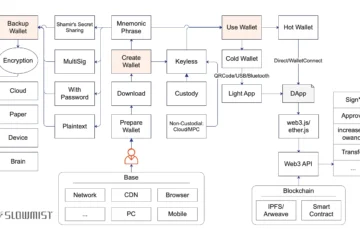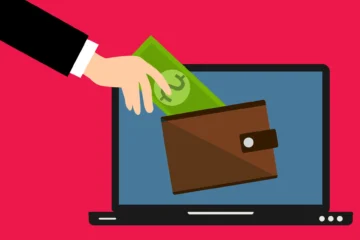NFT Scam Prevention Guide: Know the Common Tricks

As the NFT market skyrockets, “zero-cost” thefts and sophisticated scams are becoming alarmingly frequent.
Common NFT Scam Techniques
1. Fake Sponsored Ads
In 2022, crypto influencer NFT God revealed on X that hackers compromised his Twitter, Substack, Gmail, Discord, and wallet, stealing all his crypto and NFTs. The hackers used his accounts to post fraudulent links. The breach occurred because he set up his Ledger as a hot wallet on a new device, imported his seed phrase on a networked computer, and clicked a malicious sponsored link on Google while downloading OBS for game streaming. Google’s ad system allows anyone to bid for top search result placement, making it a prime vector for scams, as users often trust these ads.
2. Fake Airdrop Scams
A new scam involves “high-value” offers to buy airdropped NFTs. Victims receive unknown NFTs, followed by scammers offering to purchase them at inflated prices. Attempting to sell triggers a transaction error, directing users to a phishing site for “authorization,” which steals their assets. Recent posts on X highlight airdrops labeled with prices like “xxUSDT” or “xxPOL,” exploiting greed by auto-authorizing malicious contracts upon interaction.
3. Counterfeit NFTs
In March 2022, Tokyo’s Whitestone Gallery issued a fraud alert about unofficial parties selling fake NFTs of artist Yayoi Kusama’s work. Scammers often plagiarize artists’ work, listing counterfeit NFTs on marketplaces. These fakes, sometimes uploaded under similar-sounding project names, deceive buyers into purchasing worthless assets. OpenSea reported in 2022 that over 80% of NFTs minted via its free tool were fake or plagiarized, a trend persisting into 2025.
4. Fake Emails
In February 2022, during OpenSea’s smart contract upgrade, users were asked to migrate their Ethereum NFT listings. Hackers sent fake emails posing as OpenSea, tricking users into authorizing phishing links that stole assets, including Bored Ape Yacht Club, Cool Cats, Doodles, and Azuki NFTs. Many NFT projects require email binding for updates, making emails a hotbed for phishing scams mimicking official communications about contract upgrades or wallet verifications.
5. Compromised or Fake Official Accounts
Official NFT project accounts are often hacked due to phishing, malware, or lack of two-factor authentication (2FA). In April 2022, Bored Ape Yacht Club’s Instagram was compromised, with hackers sharing a fake airdrop link that drained $2.8 million in NFTs. In June 2022, Yuga Labs’ Discord was hacked, with phishing links posted for BAYC and metaverse projects. Scammers also create fake project accounts, gaining trust via Telegram or Discord DMs to trick users into signing malicious contracts for “free” NFTs. These signatures, often obscure strings of characters, can authorize asset theft.
6. Spoofed Address Scams
Users often verify contract addresses by checking only the first and last digits, a habit scammers exploit by creating addresses with matching prefixes and suffixes. These fake addresses are used in airdrops or small token transfers to trick users into trusting them. “Zero-transfer” address poisoning attacks also deceive users into treating malicious addresses as legitimate for interactions, leading to asset theft.
How to Protect Your Assets
Blockchain transactions are irreversible, making asset recovery difficult, especially for non-technical users. Here’s how to stay safe:
1. Safeguard Private Keys and Seed Phrases
Unlike Web2 accounts where passwords can be reset, private keys and seed phrases are irreplaceable. Once exposed, assets are gone. Scammers exploit FOMO through fake airdrops, giveaways, or “free mints,” tricking users into sharing keys or phrases. They may pose as admins or create fake websites. Never share your seed phrase; legitimate platforms like MetaMask or marketplaces never request it.
2. Bookmark Trusted Sites and Verify Social Accounts
Phishing sites are a leading cause of NFT theft, often mimicking legitimate platforms. Even polished fake sites aim to interact with your wallet. Bookmark official websites, access social accounts via verified links, and check for verification ticks, follower counts, and engagement to spot fakes. Avoid clicking DM or email links. Anti-phishing browser extensions can help flag suspicious sites.
3. Isolate Assets and Monitor Interactions
Use separate wallets for NFT trading, minting, and storing high-value assets. Keep large holdings in a wallet that avoids smart contract interactions. Regularly check wallets for unauthorized contract approvals using tools like Etherscan or revoke.cash to cancel risky permissions.
4. Cross-Verify Information
Before minting or buying NFTs, conduct thorough due diligence. Verify project social accounts for authenticity and cross-check details across platforms like Twitter, Discord, and official websites. Community feedback can reveal red flags.
5. Double-Check Addresses
Always verify full contract addresses before transactions, not just partial matches. Use wallet address books to select trusted addresses directly. Obtain project contract addresses from official channels to avoid tampered links.
6. Additional Security Measures
-
Use Cold Wallets: Store NFTs in hardware wallets like Ledger or Trezor, which stay offline except when plugged in, reducing hack risks.
-
Enable 2FA: Activate two-factor authentication on all accounts, avoiding SMS-based 2FA due to SIM swap risks.
-
Use VPNs: Encrypt traffic with a VPN like NordVPN to prevent tracking by fraudsters.
-
Report Scams: If you spot a scam, report it to the marketplace (e.g., antifraud@opensea.io for OpenSea) with details like token ID and evidence. Notify the community to warn others.
If You’re Scammed
Act fast: isolate assets by moving them to a new wallet, change social account passwords, and disconnect infected devices from the internet. Report the scam to the marketplace and authorities like the FBI’s IC3 (IC3.gov) or FTC (ReportFraud.ftc.gov). Contact cybersecurity firms specializing in fraud recovery, though recovery chances are slim due to blockchain’s irreversibility.
As scams evolve with technology, staying vigilant is critical. The NFT market, projected to reach $80 billion by 2025, remains a scammer’s playground due to its unregulated nature. By adopting these practices, you can navigate the NFT dark forest safely.










